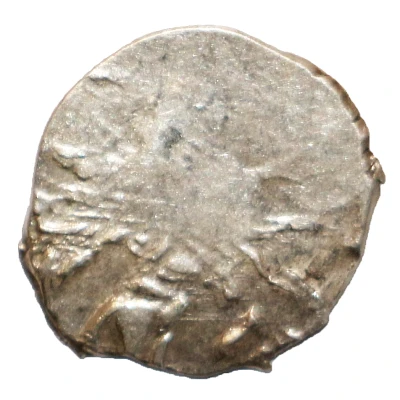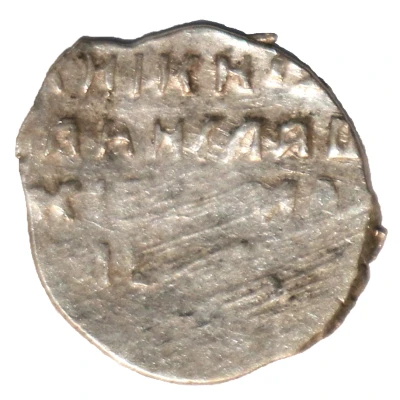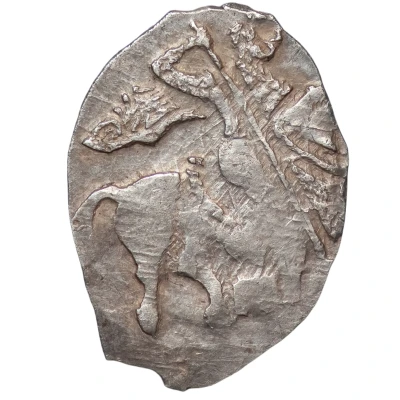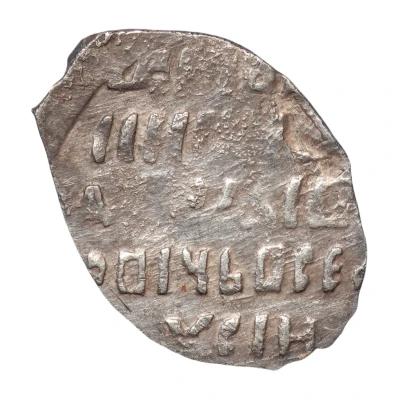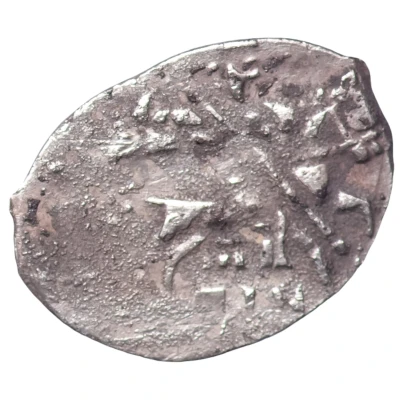
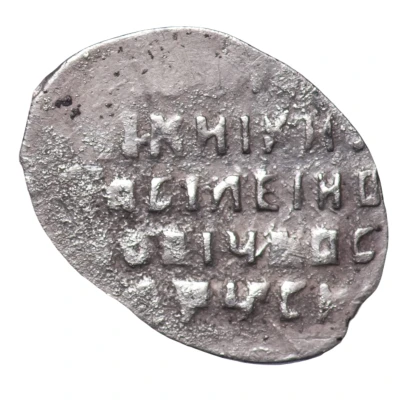

Kopeck - Swedish occupation of Novgorod with the name of Vasiliy IV; First type - РIН
7105 (1611-1615) years| Silver (.960) | - | - |
| Issuer | Russian Empire |
|---|---|
| Tsar | Vasilii IV Shuisky (1606-1610) |
| Type | Standard circulation coin |
| Year | 7105 (1611-1615) |
| Calendar | Byzantine |
| Value | 1 Kopeck (1 Копейка) (0.01) |
| Currency | Rouble (1533-1717) |
| Composition | Silver (.960) |
| Shape | Round (irregular) |
| Technique | Hammered (wire) |
| Demonetized | Yes |
| Updated | 2024-10-07 |
| Numista | N#111710 |
|---|---|
| Rarity index | 89% |
Reverse
Cyrillic inscription.
Script: Cyrillic
Translation: The Tsar and great Prince Vasiliy Ivanovich of the whole Russia
Comment
During the Time of Troubles in Russia in the summer of 1611, Swedish troops under the command of Jacob De la Gardie, with the support of traitorous boyars, stormed Veliky Novgorod. Soon after the occupation, a treaty was concluded between the Swedish military command, representing King Gustavus Adolphus, and the Novgorod authorities. According to this treaty, the Swedish kingdom established a protectorate over Novgorod.
The Swedes, having captured the functioning mint, almost immediately changed the coin standard to 3.6 rubles (reducing the weight of silver in the coins) and began minting Russian money with genuine dies with the name of the Russian Tsar Vasily Shuisky. Only silver coins with a denomination of "1 kopeck" were minted.
The use of Vasily Shuisky's name for minting coins was not accidental - it was he, as the Tsar of Russia, who concluded an agreement with Sweden in 1609 on assistance in the fight against the Poles.
The coinage used only two versions of the obverse stamps with a horseman and two versions of the reverse stamps with the name of Vasily Shuisky. This is the first type is the issue of 1611-1615.
The coinage of the Swedish occupiers can be distinguished from the coins of the time of Tsar Vasily Shuisky only by the weight of the coin:
- the weight of Vasily Shuisky's coins is 0.64-0.68 grams.
- the weight of coins minted by the Swedes is on average 0.48-0.50 grams.
It should also be said that the overall quality of coin minting during the occupation of Novgorod was quite low - due to the maximum use of the working resource of old dies.
Interesting fact
One interesting fact about this coin is that it was minted during the Swedish occupation of Novgorod, which lasted from 1611 to 1615. This period saw the introduction of Swedish currency, laws, and administration in the region, and the coinage of the time reflected this influence. The Kopeck coin, with its unique design and silver content, is a tangible reminder of this brief but significant period in Russian history.
